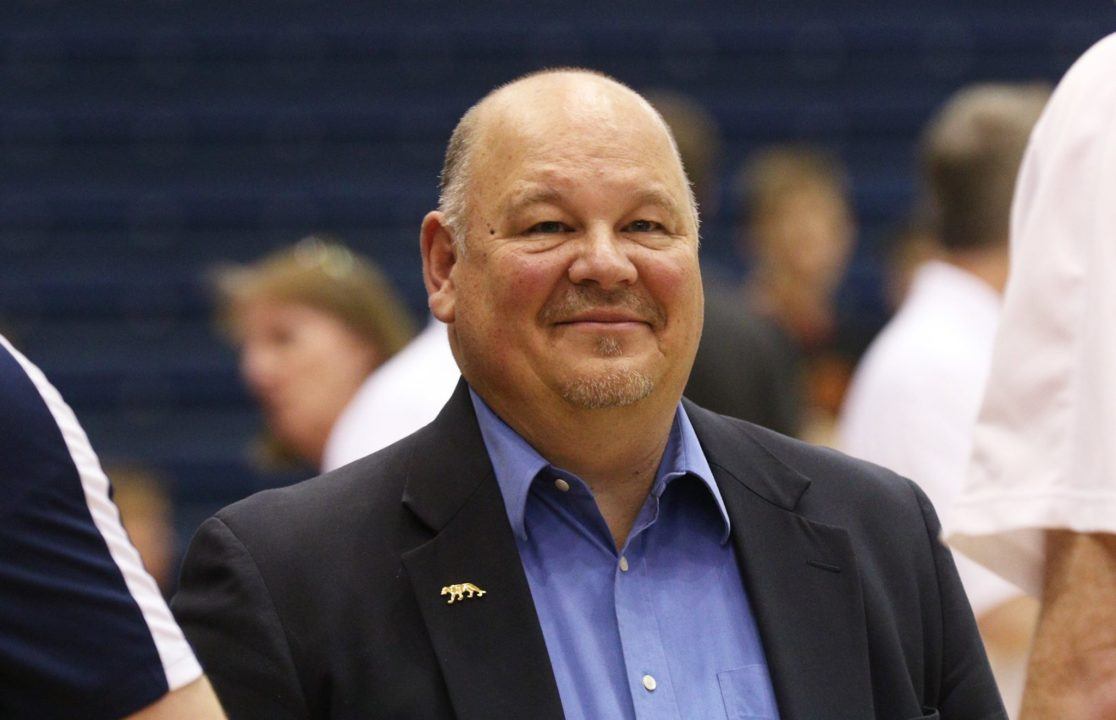Recently, I had the pleasure of catching up with Mark Pavlik, head men’s volleyball coach of Penn State, as he was preparing for the end-of-season run and the subsequent EIVA conference tournament which starts tonight. (You can read about our EIVA Tournament Preview here.)
A few of the things we’ve noticed here at VolleyMob is not only Penn State’s adjustment of lineups this season—they’ve used nine different starting lineups—but their ability to continue to play at a high level while doing so. We asked Coach Pav a few questions, and we definitely got some specific views on injuries and the current state of men’s collegiate volleyball.
VolleyMob: Thank you so very much for taking the time to chat with us!
Coach Mark Pavlik: Thanks for getting in touch with me.
VM: Let’s get right to the point; you’ve used nine different starting lineups this season. What has necessitated the changes?
MP: Prior to the expansion of men’s volleyball to the Conference Carolinas and added teams in NAIA and Division III, if we lost two starters, it was no big deal. We’d get the next two up, and there was no problem. Now, you can’t do that. In the last 10 years, we’ve seen better coaching, better evaluation of talent, and administrations giving those programs more resources to work with to identify better players.
Men’s volleyball programs that can give athletic financial packages can only give 4.5 scholarships during any one year. Add that to the geographical expansion of the game, and you can see how the game is growing. Ten to fifteen years ago, our second-team or practice team player was a walk-on. Now, that player is going to the Carolinas or NAIA or Division III if they get a great academic financial package.
Look, injuries are part of the game. And, luckily for us, it’s less about soft tissue and more about concussions and such. Waiting for those kids to get out of protocol and being ready takes time. Thankfully, we’ve had time to find a line-up that would stick.
VM: So how competitive is the recruiting trail, knowing you have to fight that much harder for a prospect?
MP: Once the whistle blows, we want to beat each other up. (Laughs) But it definitely amps up the process of getting that player. The coaches in our conference have improved at such an amazing rate…..two Ivy League schools in our EIVA tournament? Charleston knocking off a few high-level teams? That doesn’t happen ten years ago. Those coaches and their evaluation of talent has skyrocketed and made this conference only that much better.
To address your previous question, are we there yet? Is our line-up there yet? No. But for those that have been around, people can tell that injuries have hit us. We’ve had a string of bad luck and better athletes playing on other programs. The game itself has gotten stronger, faster, higher. Our practice walk-ons ten years ago are now starting on other programs these days. With the injuries, our second-teamers are going against their first-teamers. We’ve seen more concussions given in practice than anywhere else in the last five years.
VM: What statistical trends are you seeing with the changing line-ups? Is your block improving? Is side-out efficiency the focus? What about serve receive?
MP: The basis of the game hasn’t changed much for us. This is still a serve-and-pass game. Serve-and-pass wins it. Right now, the game itself allows us to live with the tougher serving, and the service errors that come with it. Ten years ago, those errors were not tolerated. So now, we have 12-14-year-olds that are looking to serve like Max Holt, DeFalco, Zaitsev, Szerszen. Those players are the models for the beginning player. Are we going to see a better model for serving? A better physical model? Or do we transition to better physical serving versus less errors? Then serve-receive sees minor changes in more of an effort to try and stay in-system. These days, offense can be created with a 1.5-2 pass with good setters adding a high ball with outside hitters that can attack that high ball more intelligently. Then you have more physicality coming at an earlier age. Those kids are learning how to terminate on a less-than-good pass with above average setters while still hitting a low-percentage kill. In rally scoring, if you can score easy points on your serve, you now force more of a premium on serve-receive.
VM: Working toward the EIVA and National Tournament, have you found a line-up that sticks? How well is the team adjusting to different looks?
MP: We are calling this the “Roll With The Punches Tour 2018”. (Laughs) They’ve done well. They have belief in each other, and they understand our goal has not wavered.
I’m from Pittsburgh, originally, so naturally I follow the Pirates. Clint Hurdle had a great quote: “Baseball is a collection of individual responsibility toward the collective gain.” You could insert volleyball, a LOT of things, in for baseball. But that’s what were doing. Those that are willing to advocate for that path are the ones that can handle the line-up changes. Those kids say, “No big deal, let’s get better.”
Are we talented enough top to bottom? Who knows? We shall see.

Leave a Reply